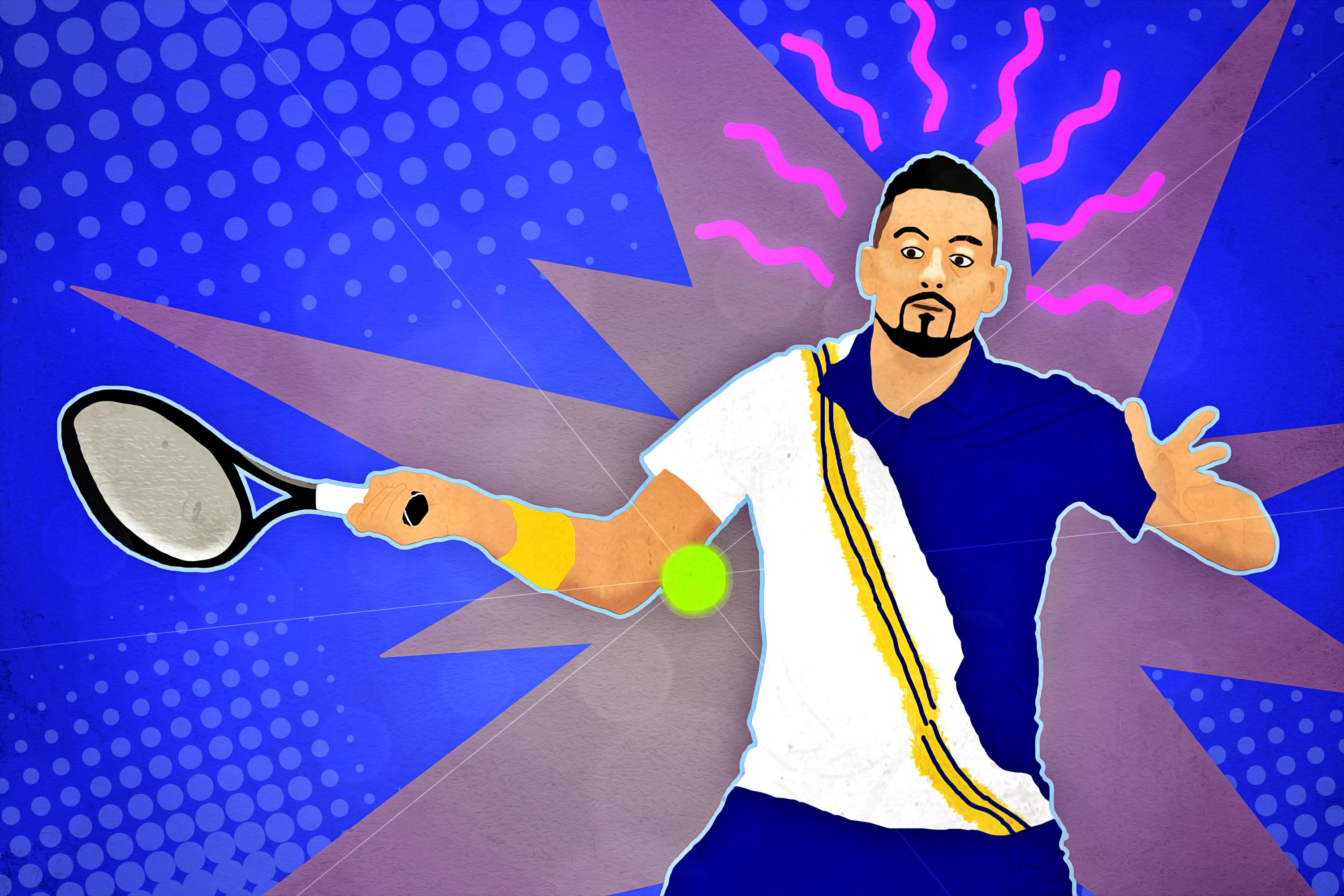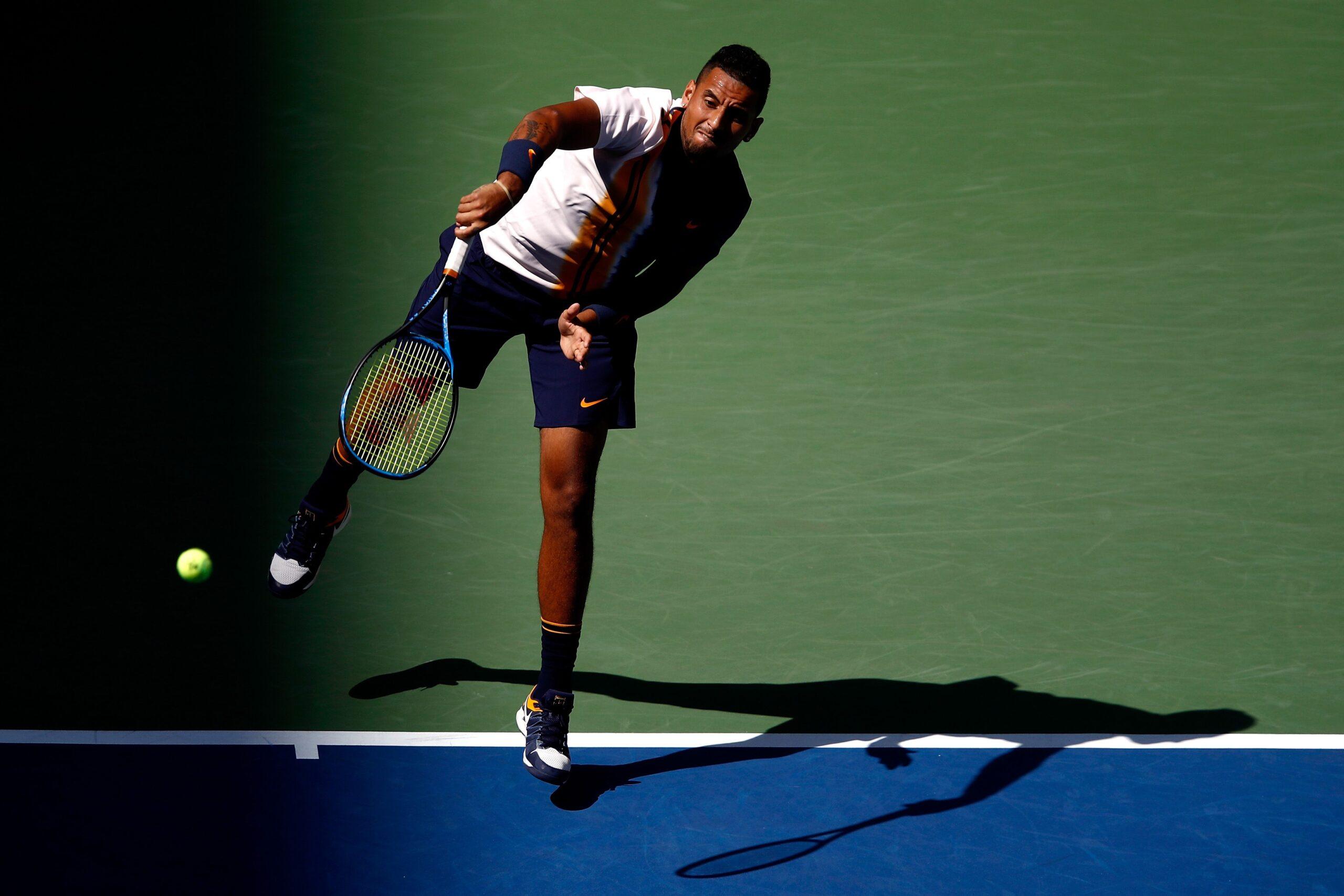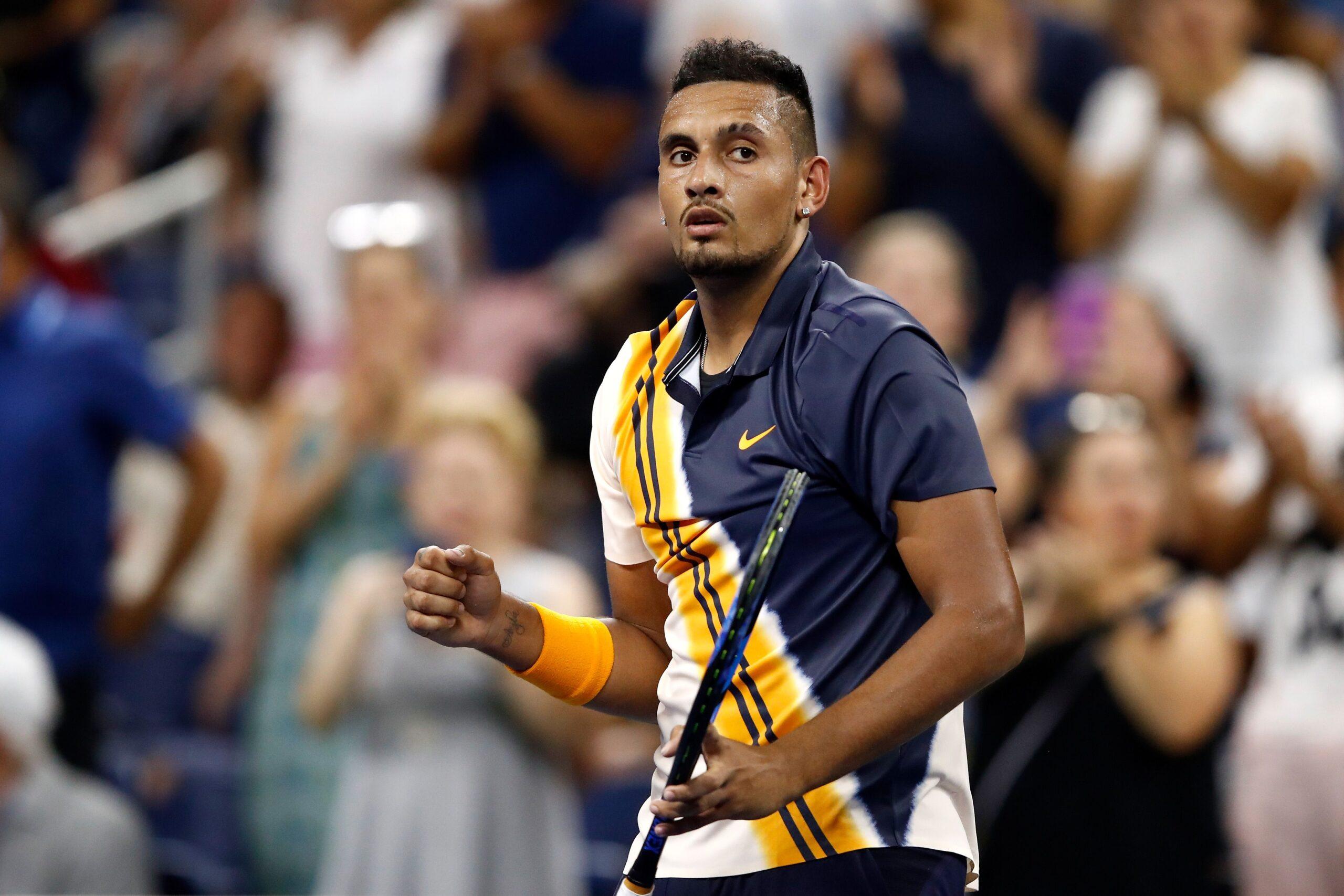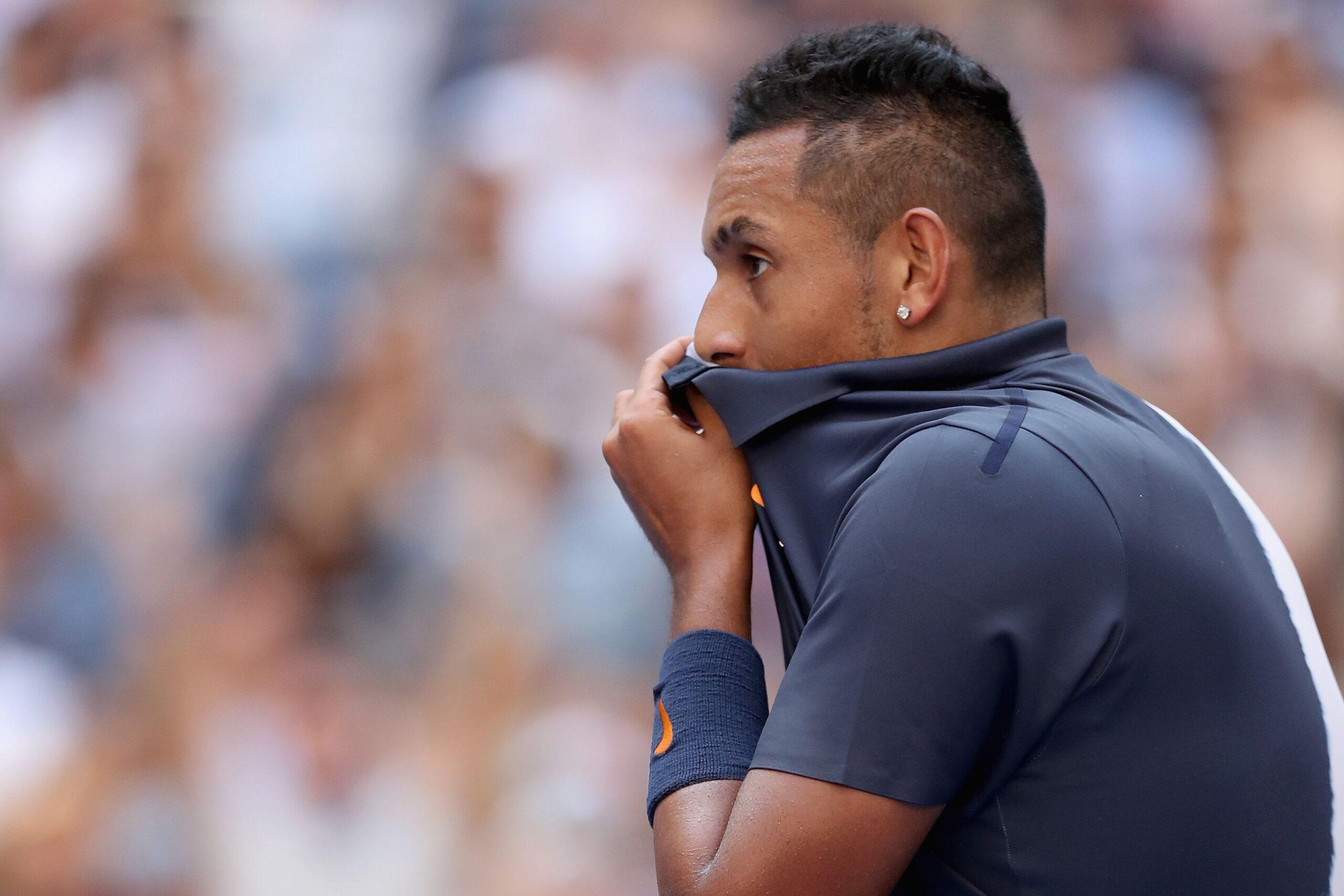
There isn’t a word for a prodigy who doesn’t quite live up to expectations. Every descriptor comes with too much negative weight. Bust is reserved for athletes who become profound disappointments. Failure carries a level of parental exasperation. Never was is overly nostalgic and depressive. Fans adjust well when athletes exceed projections but aren’t so adept when they fall short. So what is the proper way to analyze a potential generational talent turned serviceable journeyman?
Nick Kyrgios, 23 years old and ranked 30th in the world, is just now leaving prodigy territory and drifting into that great unknown. After spending about four seasons on tour being billed as the most gifted young player in tennis, Kyrgios is still just that: an unfulfilled promise. He hasn’t made a leap into the top tier of the sport, reaching his career-high ranking of no. 13 two years ago and never getting to the semifinals of a major. In this era when age seems to be meaningless, 23 isn’t early adulthood so much as it is late adolescence. But questions are being asked by both the impatient and reasonable alike: If Kyrgios is so talented, why hasn’t he made a run?
In 2018, the Australian had a decent year at the majors, if not on paper, then at least in the optimistic projections of onlookers. In Melbourne, he advanced to the fourth round, losing to third-seeded Grigor Dimitrov in a four-set, three-tiebreak affair. The match was uncharacteristic in that Kyrgios remained composed throughout. Had a couple points broken differently, this tournament could have been Kyrgios’s breakout.
Kyrgios missed Roland Garros with an elbow injury, but reached the third round of Wimbledon, losing to Kei Nishikori, a major finalist and one-time world no. 4. Entering the U.S. Open, Kyrgios’s year had been fine, if only because he hadn’t let his temperament cost him against cupcake opponents on a big stage.
It took less than a week in New York for that to change. In his second-round match against the Frenchman Pierre-Hugues Herbert, a player ranked 75th in the world, Kyrgios fell behind. His body language drooped; his feet looked glued to the court; his strokes explored the outer reaches of out-ness. With Kyrgios trailing 0-3 in the second set after dropping the first, chair umpire Mohamed Lahyani left his seat to speak at eye level with Kyrgios. “I want to help you,” Layhani said. “I’ve seen your matches; you’re great for tennis.”
Herbert managed to hold serve two more times, going up 5-2 to come to the verge of taking a two-set lead. Then Kyrgios went on a tear, breaking Herbert’s serve, taking the second set in a tiebreak, and sprinting through the third and fourth sets, 6-3, 6-0.
The tennis community widely disapproved of the Layhani incident. Roger Federer declared from a press conference table that he thought the umpire had overstepped his bounds. Andy Roddick tweeted a more sympathetic version of the same sentiment. ESPN’s commentators were split. Andy Murray, a friend of Kyrgios, joked that Lahyani was the Australian’s new coach.
It is the job of the chair umpire to warn a player if he seems to be tanking a match, as Kyrgios has notoriously done in the past. It is within the umpire’s purview to ask a player if he requires medical treatment. It is not the job of the umpire to coach a player or give a pep talk during a match. On the men’s tour, not even actual coaches are allowed to do that.
Perhaps Lahyani struck the wrong tone while trying to warn Kyrgios against tanking. Nonetheless, he presented a fascinating hypothetical: Is Kyrgios a pep talk away from having an entirely different career?

Almost every tennis player of relevance can be compared to Andre Agassi. Over his two-decade career, the American lived a hundred lives. Before becoming a revered elder statesman and one of the mainstays atop the tour, he was the unimpeachable best player in the world. Before that, he was a celebrity with a too-famous ex-wife and a meth problem who didn’t care enough about tennis. Before all of that, though, he was a spoiled, overrated prodigy.
Agassi was marketing boon before he was a competitive success. He was tagged as the future of the game long before he managed to win a major. “I know that I was always somebody that cared more [about tennis] than I portrayed because it was my defense. It was my way of hiding myself from myself, and I needed to come to terms with that through a long, painful process,” Agassi has said with respect to Kyrgios. “The journey I lived has taught me a lot about how deep one’s struggles can be and how much good can still exist at the same time.”
Still, Agassi reached three major finals and four additional semifinals before winning Wimbledon at age 22. He received much the same treatment as Kyrgios, but anyone who pays attention to tennis can see the difference between the two. In his early 20s, Agassi was a player on the cusp of competitive breakthrough, dragged through the mud by a (more) puritanical tennis world scandalized by swagger’s intrusion into the sport. Kyrgios possesses similarly polarizing individualism—he often takes the court in a pair of high-top Air Jordan 1s—but even through sympathetic eyes he is not a few lucky bounces from a major win. Perhaps he’s 50.
Maybe Marat Safin is a better analogue. At the turn of the century, the big Russian could seem like the most gifted player on tour on the right day. The issue was that those days came very far apart. Like Kyrgios, Safin was a wizard who stood 6-foot-4 and mashed the ball like it had just spat in his face. Also like Kyrgios, he was famous for tantrums. Safin won two majors but is better remembered for smashing 700 rackets during his career.
Yet there were times when it all came together. In 2000, at 20, Safin dismantled Pete Sampras in the final of the U.S. Open. In 2005, he knocked off apex Federer in a marathon five-setter in the Australian Open semifinals before winning the title against Lleyton Hewitt, who was then backed by a ravenous home crowd. Those days were proof of concept. Safin flamed out in many, many first weeks, but sometimes he excelled as his truest believers imagined he could.
Or perhaps the best Kyrgios comparison is Richard Gasquet. At the US Open last Saturday night, Gasquet took on Novak Djokovic. The now 32-year-old Frenchman was once a prodigy and a much more imposing prospect than Djokovic. There are videos of him as getting the better of Rafael Nadal as a tween. At 15, he was the world’s top-ranked junior player who was in the main draw at Roland Garros. As Djokovic and Andy Murray began their rises circa 2007, Gasquet was supposed to accompany them.
He didn’t, of course. Gasquet reached the semifinals at Wimbledon and attained a career-high ranking of no. 7 in 2007 at age 21. He wouldn’t get past the fourth round of a major again for another six years. In 2009 he was suspended from the tour after testing positive for cocaine and was reinstated two months later after he protested that the substance only entered his system when he kissed a woman in a Miami nightclub.
In Ashe, after the smoke machines and lasers had shut off and the arena’s speaker system stopped blaring “Seven Nation Army,” Gasquet took the court to tepid applause. As the crowd grew louder and Djokovic came in through the tunnel, it became evident that a dye job had turned Gasquet’s hair gray, almost as if he were trying to show that he was tired of everything that had happened to this point.
Gasquet is an artist’s player. More than for any of his competitive achievements, he is known for having the most beautiful backhand in the game, a one-hander that’s an irresistible, arced release of coiled power. Fans love Gasquet’s backhand, just like they can’t help but love Kyrgios’s serve. Djokovic, clearly, has never cared about it. After a tight first service game, the Serb spent the rest of the night having his way and winking at the crowd. The match was over in about two hours, 6-2, 6-3, 6-3.

In the recent documentary John McEnroe: In the Realm of Perfection, director Julien Faraut points out through a narrator that, “When you watch a tennis match, you don’t ever really know what you’re watching.” The shortest matches have lasted the length of a network sitcom episode. The longest match ever recorded, the narrator points out, would occupy the same amount of time as a Godfather movie marathon with hour-long intermissions between each film. Tennis is not for those with commitment issues. Kyrgios matches are trying even for the most tolerant people in the world.
A Kyrgios match can be, on different days, a comedy, a tragedy, an action flick, or a psychodrama. Watching him play is an empathy stress test. Some criticisms of Kyrgios can take on ugly overtones, but sometimes even reasonable people can agree: He could definitely try harder, and he could really be less of a jerk.
It is hard to encompass all of Kyrgios in one comparison to another tennis player. In fact, it may be more telling to compare him to a pair of supreme basketball talents. In Boom Town, Sam Anderson’s 2018 book on the rise and psychology of Oklahoma City and its basketball team, the author takes particular fascination with the two contradictory superstars who long owned the city: Kevin Durant and Russell Westbrook. Each of them shares qualities with tennis’s favorite enigma.
Durant has always been immensely talented, but early in his career he could seem overwhelmed by the moment. He also seemed to battle lingering insecurities, and years after leaving Oklahoma City to join the Warriors, Durant still engages with detractors on Twitter (like Kyrgios), even after winning multiple championships. Anderson likens Durant’s game to “watching the Eiffel Tower breakdance.” His skill with the ball, the fluency of his jump shot, the way his body moves at 7 feet tall—he’s an unmissable anomaly. “Durant’s basketball arsenal was unfair, but sometimes it looked like he was trying to use it in a fair way,” Anderson writes. “There were times, during games, when he seemed slightly removed from the action, simultaneously present and absent.”
These sentiments could all reasonably apply to Kyrgios. He’s so fast, strong, and perceptive—and also taller than just about everybody else who isn’t a serve-and-hope-for-the-best tennis player—that he can often look like a glitch come to life. When he serves, it feels like a small sonic boom should accompany the ball over the net. Sometimes it appears as if he chooses to play a shot for show rather than efficiency. Sometimes, he’ll opt to forego his usual forehand motion and go with a direct slap of the ball, which clocks in over a hundred miles an hour. Watching Kyrgios play good tennis makes the sport look simple; when he plays bad tennis, then, it can look like he isn’t trying.
Westbrook has never looked like he wasn’t trying. “He liberated all of his energy, in every situation, all at once, over and over,” Anderson writes. “He appeared to be insulted by the very concepts of size, distance, limitations, restraint.” Unlike Kyrgios, Westbrook seems to want to win more than anything else. But like Kyrgios, he sometimes lacks the best ideas for how to make that happen.
Kyrgios can let his energy get in his way. He often tries to hit a second serve with as much force as the first. In a match at the Cincinnati Masters earlier this summer, down match point, Kyrgios smacked a fault off the tape. Then, with his tournament on the line, he launched an ace at 133 miles per hour. Run the scenario a hundred times, and in 90 of them he would have whipped a double fault, looking like he was trying to book his ticket out of town as fast as possible.
Westbrook, like Kyrgios, also hates to be bothered. The point guard clearly expresses his distaste for anything that gets in his way, and so does the tennis player. Kyrgios is the only man in the top 100 who lacks a coach. He has told noisy members of the crowd to shut up. A great performance can be derailed by a misdirection of limitless power. Perhaps as with Westbrook, the brilliance and the neurosis cannot be separated.

On Saturday afternoon, about seven hours before Djokovic’s win over Gasquet, Kyrgios walked onto the court in Ashe to play his first match since the Layhani incident. The sky was the blue of a robin’s egg. For the first time in weeks, the temperature was cool, and it felt like fall in New York. Kyrgios’s reward for pulling through his previous match was an appointment with Federer.
This, counterintuitively, should have been reason for Kyrgios to feel good. One of the most common introductory facts about the Australian is that he beat Federer, Nadal, and Djokovic in his first meeting with each of them. Each of his three prior matches against Federer had gone the distance, and eight out of the nine sets they’d played went to tiebreaks. Their three-tiebreak match in the semifinals of the 2017 Miami Masters was maybe the most exciting contest of the season. Kyrgios’s level is prone to drop in early rounds, on outside courts, and against qualifiers. Against top competition, he is loathe to give an inch.
Early on, the Australian stayed with Federer, and possibly even outpaced him. His serves were thunderclaps ringing off the stadium’s awning. It seemed that nearly every first serve clocked in the high 130s. Federer, after the match, would call Kyrgios’s quick start “inspired.”
Yet at 3-3 in the first set, Kyrgios led 0-40 on Federer’s serve and squandered all three break points. Shortly after, he dropped the set. In the changeover, Kyrgios yelled at his box and himself, animatedly trying to talk himself into hitting more playable first serves. Federer, meanwhile, sat up straight, peering directly into the crowd. He quickly dispatched Kyrgios in the second set, 6-1.
By the third set Kyrgios recovered, but by then Federer’s eyes had found their target. Tennis is a game of vision, and Federer’s ability to read service tosses falls into a category of its own. Serving at 3-3, the Australian fielded a short Federer return with a cheeky drop shot cut at an impossible angle. He redirected the ball all the way from one sideline to the other so that it bounced up outside of the opposite net post. Federer, somehow, reached the ball in time and hit a winner around the post. Kyrgios pulled his shirt up to his mouth and sarcastically lobbed a ball from his pocket to Federer, as if he were giving up on the game. On the next point, as he was serving, he flashed his magnetic grin to the crowd. It was impossible not to smile with him.
After the match, Kyrgios addressed his shortcomings head on. “I have been around [the tour] for about four years now; I have barely done anything,” he said. “I think I can do a lot more. As I said, it’s all mental with me, I think.”
In this moment, it became especially difficult to reconcile one image of him with another, the tantalizing talent with the familiar flop, the fun-loving genius with the brat. “Every sports superstar becomes a cartoon,” Anderson writes. “Some cellular speck of an actual human is extracted, exploded, and then reproduced, infinitely, internationally, in simple lines and primary colors, and presented as if it were the actual person.” It’s impossible to say whether Kyrgios will finish his career as a winner or a loser, or whether he’s ever going to maximize his potential on the court. It can be frustrating not to have any idea where he’s heading. But isn’t it more interesting, rather than knowing, to watch and see?